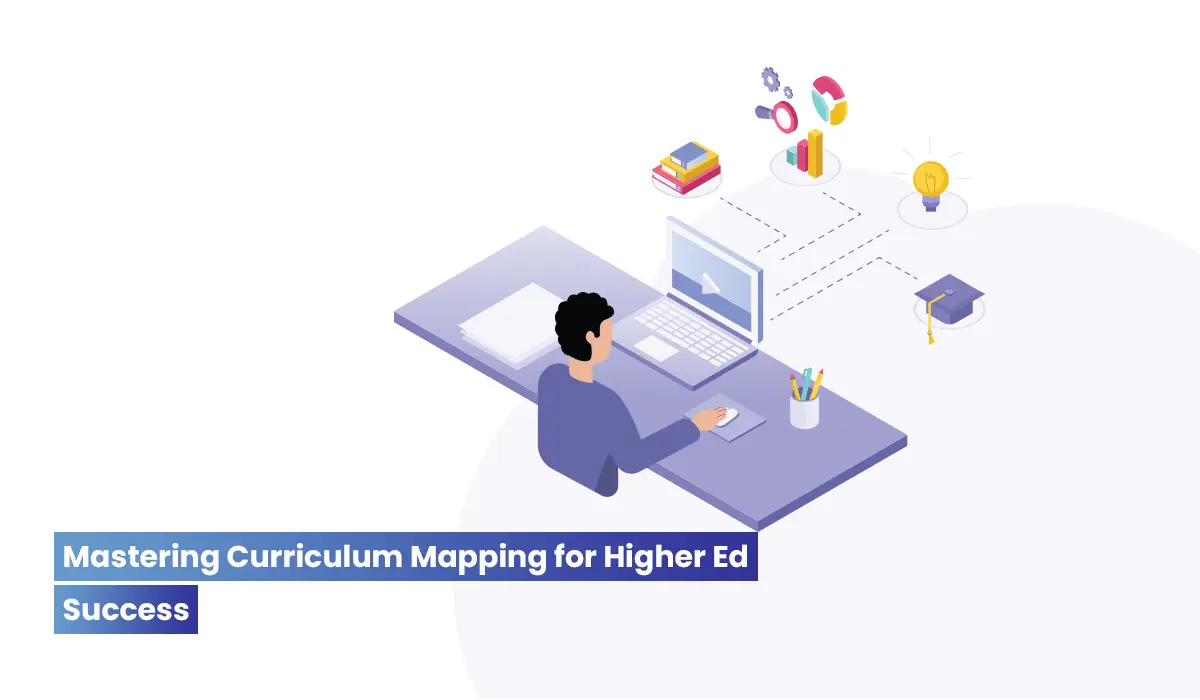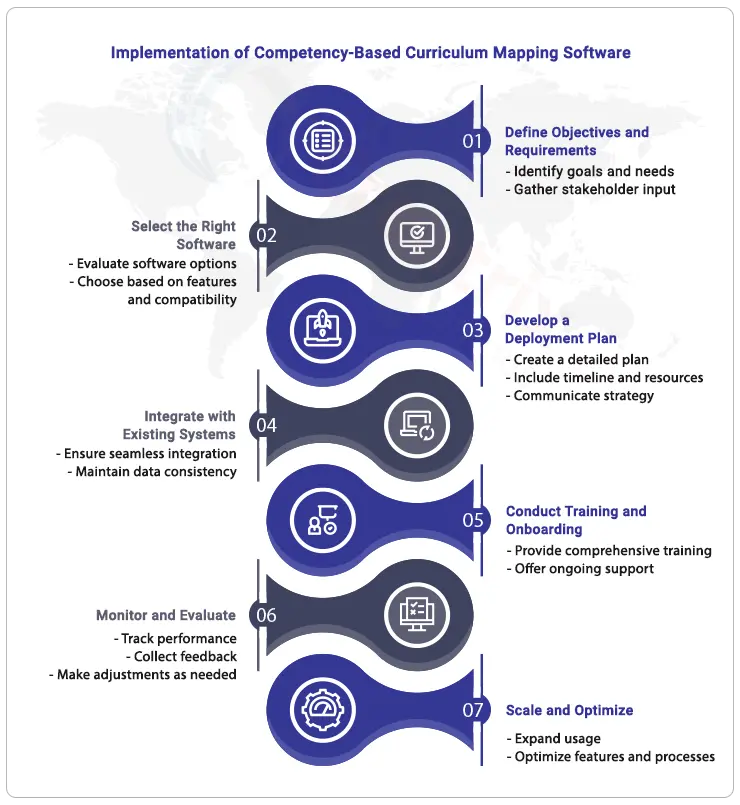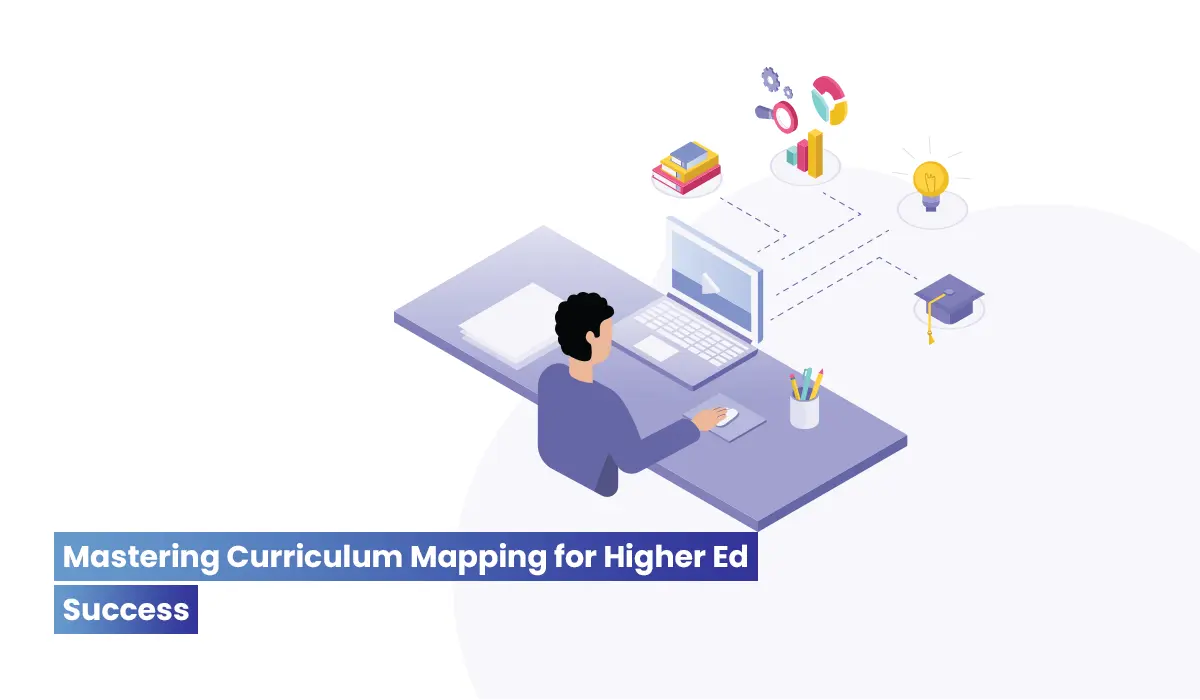Designing for Success: The Principles of Competency-Based Curriculum Mapping Software in Higher Education
editor
Mon, 07/29/2024 – 03:45
Accreditation ManagementHeader Menu White 1NoneFooter base 1Blog Style 1Right 
Team CreatrixOff
Introduction
As higher ed decision makers, you should be aware that the goal of competency-based curriculum mapping is to define and evaluate the information and abilities necessary for students to succeed. It is a strategic approach. This approach improves student performance and aligns academic programs with industry demands by guaranteeing that curricula in higher education are in line with specific, quantifiable capabilities. Institutions dedicated to providing relevant, high-quality education must embrace these ideas. Let’s elucidate the key principles of Competency-Based Curriculum Mapping Software in this blog post.
Principles of Competency-Based Curriculum Mapping
To guarantee that competency-based education (CBE) is both successful and aligned with academic objectives, HEIs must use Competency-Based Curriculum Mapping, a systematic framework, that rigidly follows the following crucial principles.

1. Define Clear Competencies
The foremost principle, the competency-based curriculum mapping’s fundamental tenet is the establishment of distinct competencies. This is figuring out what precise, quantifiable information and skills the students need to learn and articulating them. This principle underlines the fact that the program’s overall learning objectives should be in line with these competencies, which should be unambiguously articulated.
Through clear expectations, those in your curriculum team may make sure that students know what’s needed to succeed and can adjust their learning experiences appropriately. To enable more focused and efficient teaching and learning tactics, clear competencies also offer a standard for evaluating student development and mastery.
2. Align Curriculum with Competencies
The curriculum must be in line with specified competencies in order for educational programs to be both successful and pertinent. This idea entails organizing the curriculum, ensuing exercises, and assessments in a way that directly aids in the growth and proficiency of the specified skills. This way, the HEIs may provide a coherent and targeted learning environment that directs learners toward the intended results.
According to a poll conducted by the Association of American Colleges and Universities (AAC&U), 93% of employers value critical thinking, effective communication, and problem-solving more than a candidate’s major. This emphasizes the need to link the courses with capabilities desired by the workforce. It is one hundred percent true that when your curricula correspond with these competencies, every course component contributes to key skill development, improving learning and preparing graduates for real-world challenges out.
3. Incorporate Flexible Learning Pathways
To suffice the requirements of students with varying learning styles and speeds, flexible learning paths must be figured out. The third principle is all about this. According to this theory, students can advance according to their comprehension of the subject matter rather than following a set timetable by being given several paths to obtaining skills. A student can customize their education to fit their unique circumstances and objectives by utilizing flexible routes of action, which include online courses, modular and hybrid learning, and customized study programs.
4. Use Continuous Assessments
Monitoring student development and guaranteeing competency mastery depends heavily on ongoing evaluations. Regular assessments via assessments, assignments, paperwork submissions, projects, and peer reviews are part of this major principle. Educators and those in the curriculum committee can successfully promote student growth by addressing learning gaps, providing timely feedback, and customizing the curriculum through ongoing assessment.
5. Provide Real-Time Feedback
Learning effectively requires immediate feedback. Early feedback can raise student performance by as much as 20%, according to research. Through instantaneous and practical feedback, instructors enable students to promptly identify their areas of strength and growth.
6. Leverage Technology and Data Analytics
To increase curriculum efficacy, leverage technology and data analytics. To track student development and evaluate performance indicators, use cutting-edge techniques. These work most of the time. Use these observations to inform real-time curriculum modifications and instructional strategy improvements that maximize student learning and results through data-driven decision-making.
Implementing Competency-Based Curriculum Mapping Software

To guarantee a seamless integration into an institution, competency-based curriculum mapping software implementation requires a few essential phases. From the first stages of planning to the complete implementation and use, these processes provide guidance.
- Clearly define the goals of your organization. This forms groundwork. Determine the essential skills and get feedback from your curriculum team and decision-makers, administrators, and students to mold your strategy.
- Locate the perfect fit! Look for curriculum management software with strong analytics, smooth integration options, and flexi workflow frameworks. Check demos to make sure they meet your objectives.
- Allocate resources, plan training, and establish a thoroughly planned deadline.
- To maintain uniformity and to be in proper sync, integrate new software with the SIS and LMS.
- Orient and assist stakeholders with practical training sessions.
- Keep an eye on everything, end-to-end, and make any adjustments.
- Optimize features by scalably integrating applications across departments/campuses.
Conclusion
By utilizing continuous assessments, real-time feedback, flexible learning, curriculum alignment, competence definition, and technology utilization, competency-based curriculum mapping may be implemented. With our cutting-edge, comprehensive curriculum mapping software intended for higher education, see how Creatrix Campus may improve your academic results.
Pillar ContentOff
#Designing #Success #Principles #CompetencyBased #Curriculum #Mapping #Software #Higher #Education










